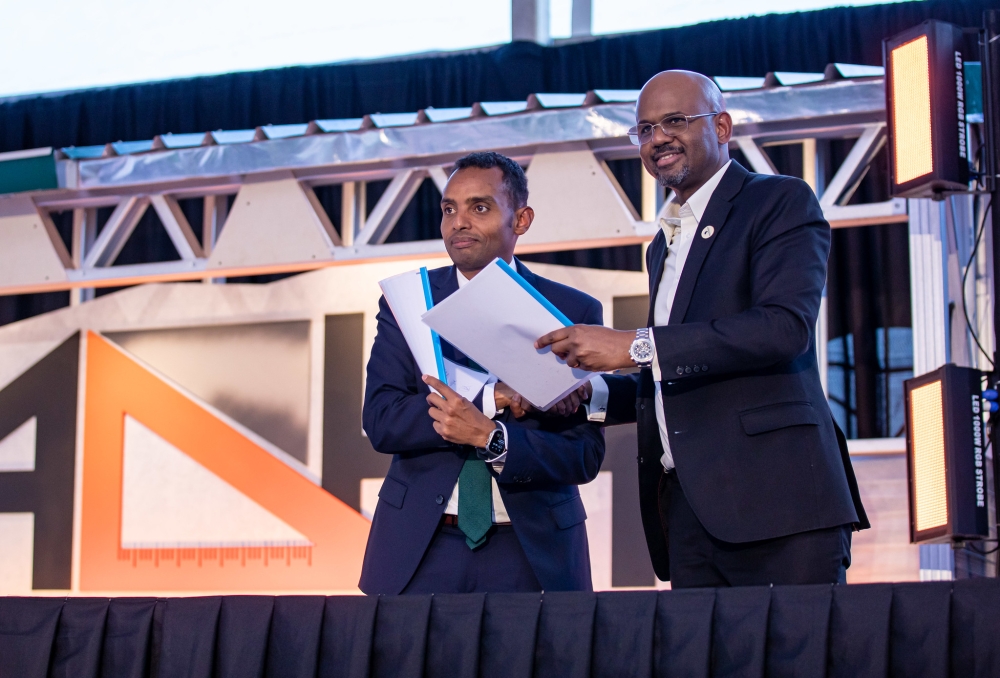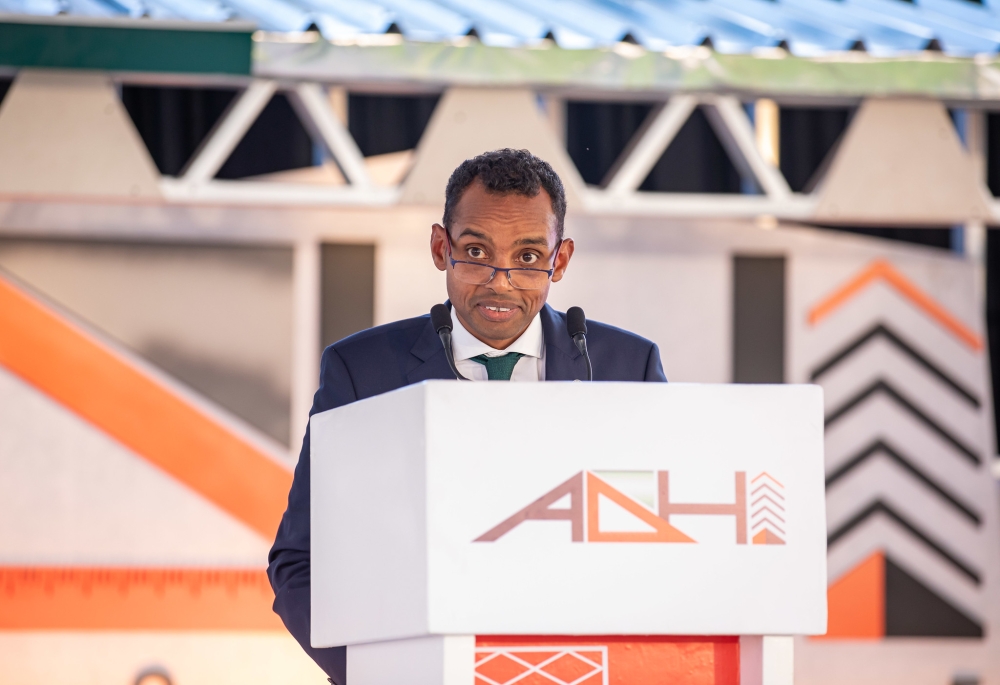

On June 13, ADHI Africa Holding Limited and Shelter Afrique Development Bank (ShafDB) inked a $35 million agreement for the Bwiza Riverside Homes project's Phase II. This significant step aims to address housing challenges by fostering sustainable urban growth in Rwanda, highlighting a model for comparable initiatives throughout Africa.
ALSO READ: 70% of Bwiza Riverside Estate homes sold
The Letter of Intent (LOI) was finalised on the last day of ShafDB’s 43rd Annual General Meeting (AGM) in Kigali from June 11-13.
The AGM convened more than 100 delegates from 44 African member states, touring the Bwiza Riverside Homes Phase I in Karama Sector, Nyarugenge District, Kigali. This phase consists of 247 homes and demonstrates ADHI Africa’s dedication to offering affordable and dignified housing.
The site visit also provided a demonstration of ADHI’s Light Steel Frame (LSF) and lightweight concrete construction technologies, which are key to their affordable and high-quality housing solutions.
Participants viewed the master plan of Bwiza Riverside Phase II, which will include 440 units and is expected to be completed in 18 months, once it starts.
"Having toured the Bwiza Riverside Phase I, I am immensely proud of what we have accomplished together with the government of Rwanda. Bwiza Riverside Phase I is not just a construction project; it is a symbol of hope, resilience, and innovation,” said Hassan Adan Hassan, CEO of ADHI.


He noted: "This initiative embodies our vision for a future where every African family has access to decent, affordable, and sustainable housing. This symbolises what we can achieve when we unite our strengths, expertise, and resources towards a common goal.”
Hassan highlighted that Bwiza Riverside is a story that needs to be shared across Africa, showcasing Rwanda’s leadership in addressing the housing crisis with strategic innovation. In the pilot phase, ADHI collaborated with the Rwanda Development Bank (BRD) and the World Bank (WB). This approach created tailor-made mortgage options that extended the dream of ownership to the masses.
Hassan said: "One of the technologies Rwanda chose to bet on is ours—ADHI’s patents and products, an African solution by Africans. This public-private partnership (PPP) we are showcasing marks a potential turning point in the nation’s housing evolution and, hopefully, across the continent.
"We not only build homes but also manufacture up to 70 per cent of the construction materials needed. This integration significantly reduces costs and enhances sustainability,” he added.
ALSO READ: How affordable is Kigali’s ideal housing unit?
Thierno-Habib Hann, the CEO of ShafDB, said the initial agreement between the two parties was signed in 2023 in Dubai during the COP28 summit. This marks the second stage of that process.
"We have signed a letter of intent to work on Riverside Phase II. We will be working with them not only to mobilise the proper funding for the project but also provide advisory structuring initiatives to ensure the project is delivered sustainably and make sure that it is bankable,” said Hann.
He noted that the Bwiza Riverside project is particularly interesting because it is green ADVANCED certified by the International Finance Corporation’s (IFC) EDGE Certification programme. It is also affordable and inclusive, involving women in the housing value chain and promoting women&039;s ownership.
"ShafDB has 44 country shareholders. Our idea is to use this model as a success story from Rwanda and extend it to the rest of Africa. Delegations from many countries are here to see how we can replicate the Bwiza Riverside model in their respective countries. This is the beginning; we’re going to start with these pilots and then scale up,” he said.
Hann mentioned that Africa has a housing deficit of 52 million homes, requiring rapid construction to meet this demand. "This technology enables us to quickly address the housing shortage and the increasing demand for housing in Africa.”
Empowering "future builders" of Africa
Among other key important components of ADHI’s strategy is their Technical and Vocational Education and Training (TVET) academy, certified by the National Open College Network (NOCN). The academy equips students with the skills necessary for sustainable construction practices in one year.
As explained, the TVET academy is essential in developing a skilled workforce capable of implementing green building technologies across the continent.
Rodrigue Izabayo, a soon-to-be graduate from the academy’s fourth cohort of 50 students, holds an advanced diploma in civil engineering from IPRC Kigali and is currently studying Light Steel Frame (LSF) and sustainable LSF construction. LSF construction uses cold-formed steel as the main structural material.
According to Izabayo, the LSF process involves several stages: ‘production’ of raw materials, ‘assembling’ the desired frame for walls, columns, or stairs, ‘erection’ by positioning assembled frames into place, ‘roofing’ to cover the building, and ‘finishing’ with cladding using fibre cement boards, gypsum boards, or plain concrete, depending on the room’s function and weather conditions. This method was used to build all the houses in Bwiza Riverside, making it easily replicable anywhere and anytime.
For Izabayo, "This guarantees employment opportunities for Rwandans as it aligns with the demands of the construction market and can also be applied internationally.
"Our country is promoting the use of small land areas to construct more houses, which is only possible with LSF. People should join the movement and gain more knowledge about it,” he added.
Rwanda aims to create 150,000 new houses annually to meet the projected demand of 5.5 million houses by 2050. Through initiatives like the affordable housing programme, the government seeks to address the needs of low and middle-income communities.


